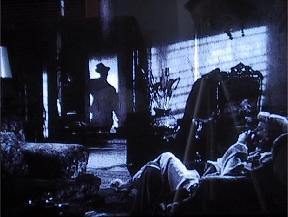 Rita Hayworth in Gilda (Charles Vidor, 1946), presents an iconic femme fatale in this classic film noir production. She possesses glamour with a seductive ambience. The soft lighting and back lit scenes of Hayworth strengthen this sexiness, vulnerable and wanton character.
Rita Hayworth in Gilda (Charles Vidor, 1946), presents an iconic femme fatale in this classic film noir production. She possesses glamour with a seductive ambience. The soft lighting and back lit scenes of Hayworth strengthen this sexiness, vulnerable and wanton character.With a character who became her, a signature role of iconic 40's glamour, Hayworth makes Gilda. Hayworth is Gilda. This rings true to her famous saying "every man I knew went to bed with Gilda... and woke up with me".
Gilda presents iconic aspects of film noir such as swirling cigarette smoke, shadows and stylised shots. Along with film noir themes such as love, hate, jealousy, money, betrayal and of course the femme fatale. Other more taboo themes are explored subtly such as sexuality.
A great film showcasing a true classic hollywood glamour star and iconic 40's film noir themes. As classic as films come.
